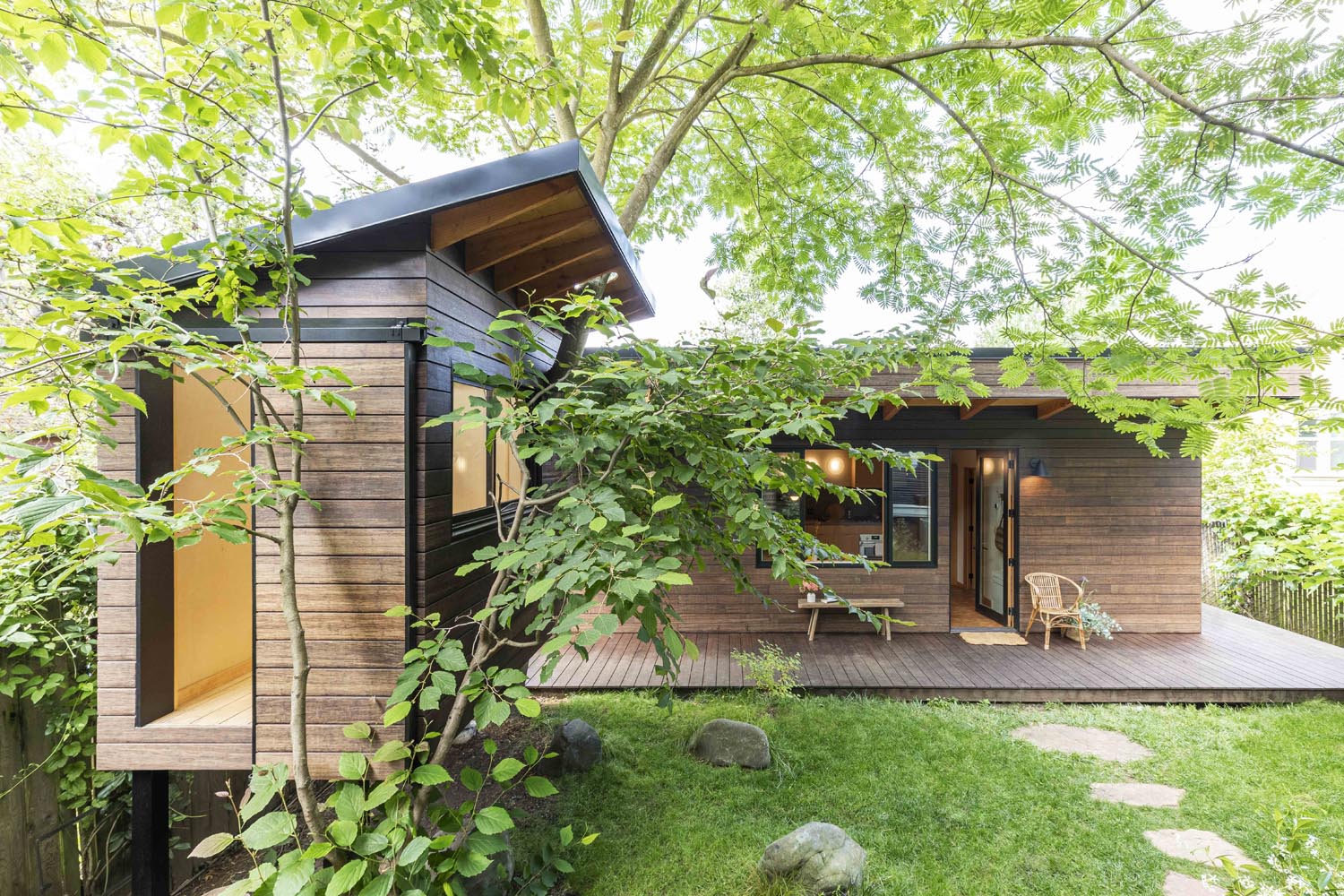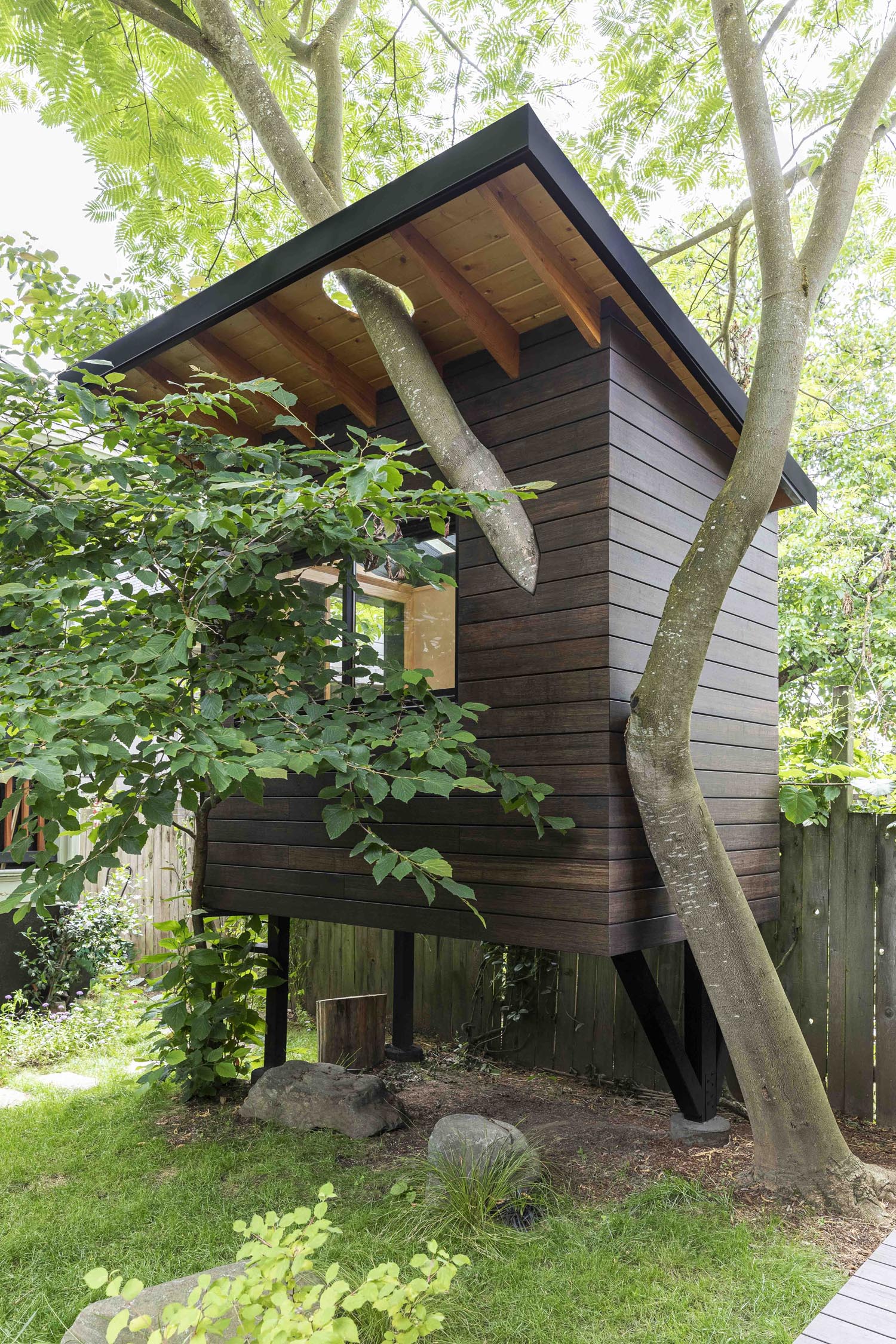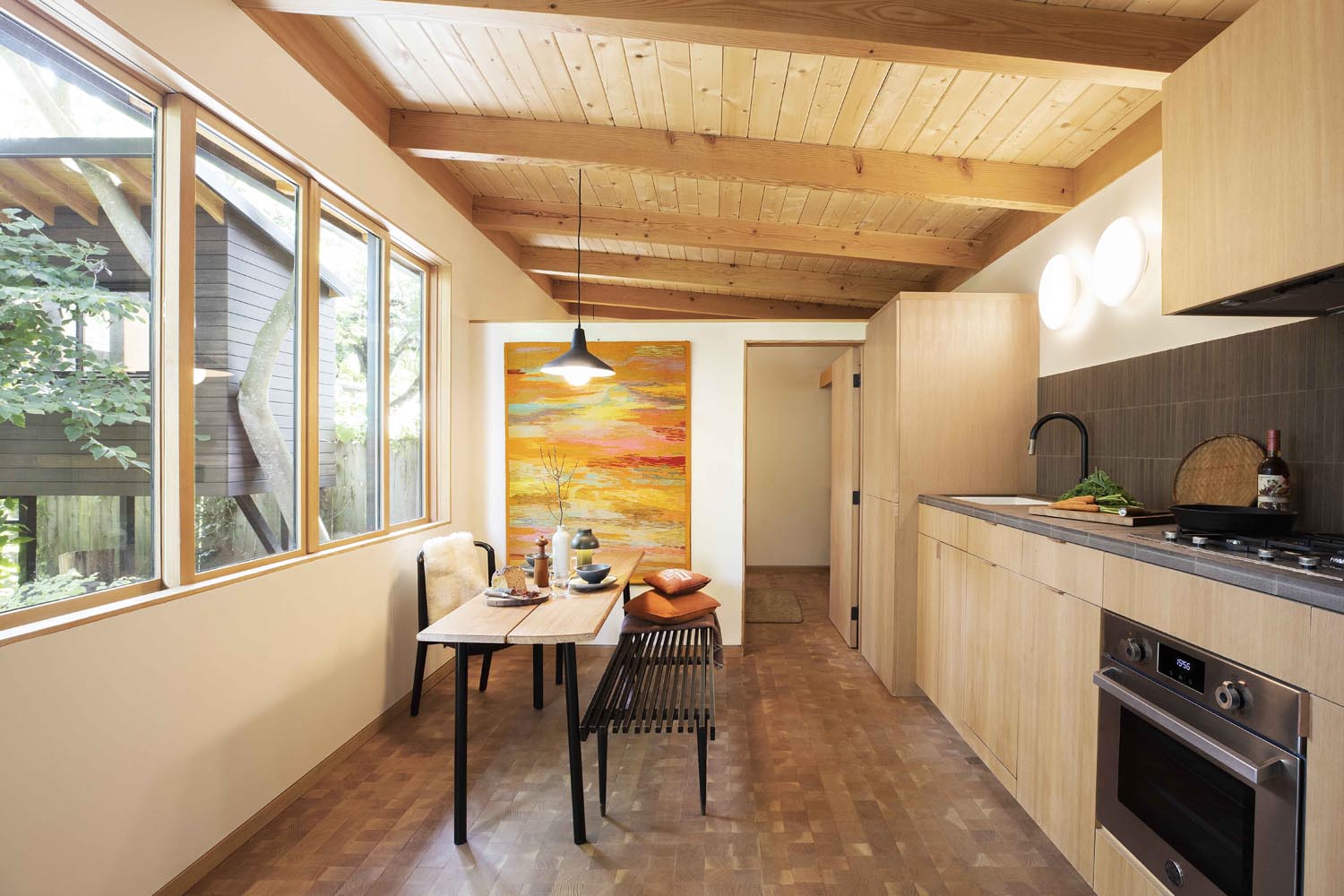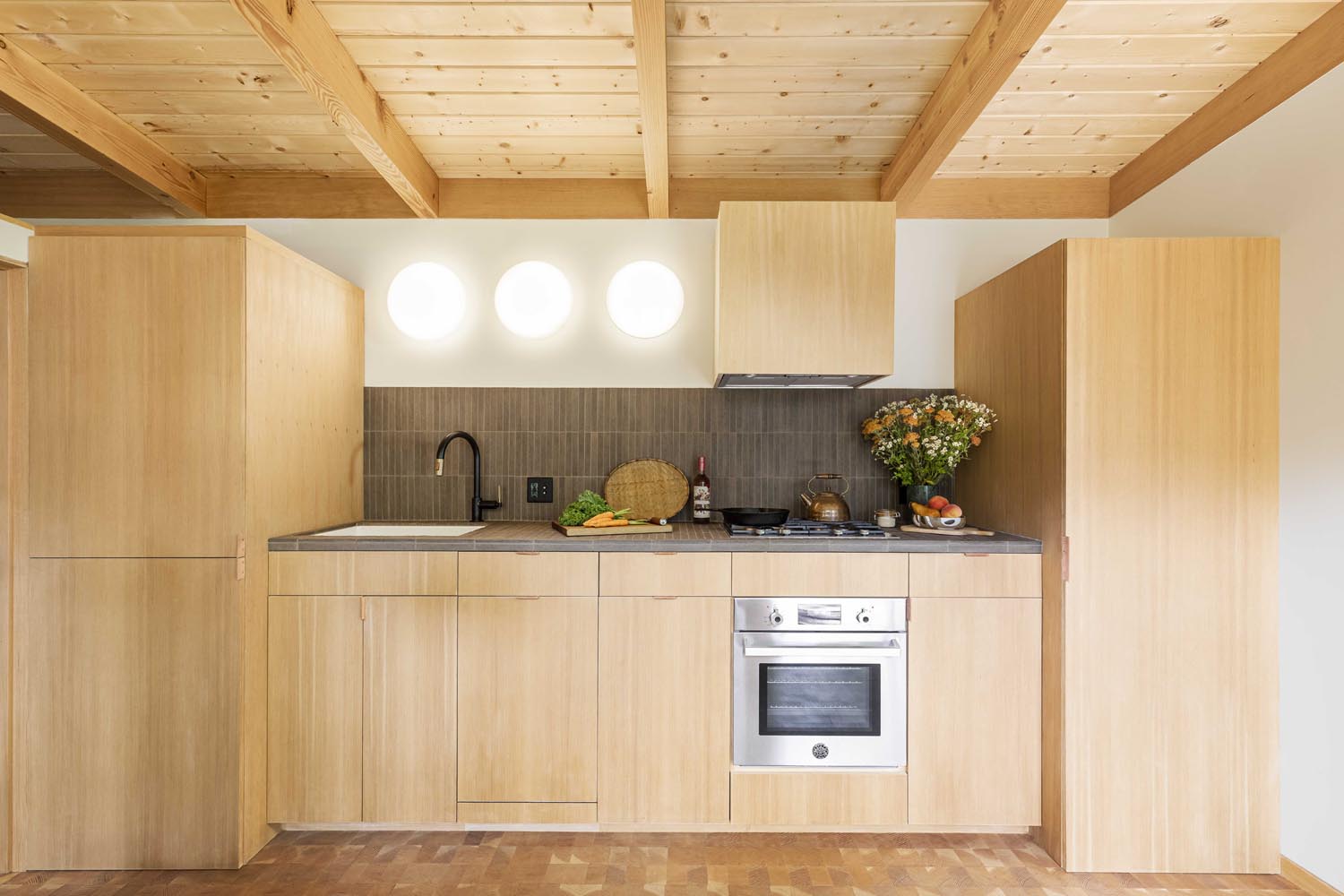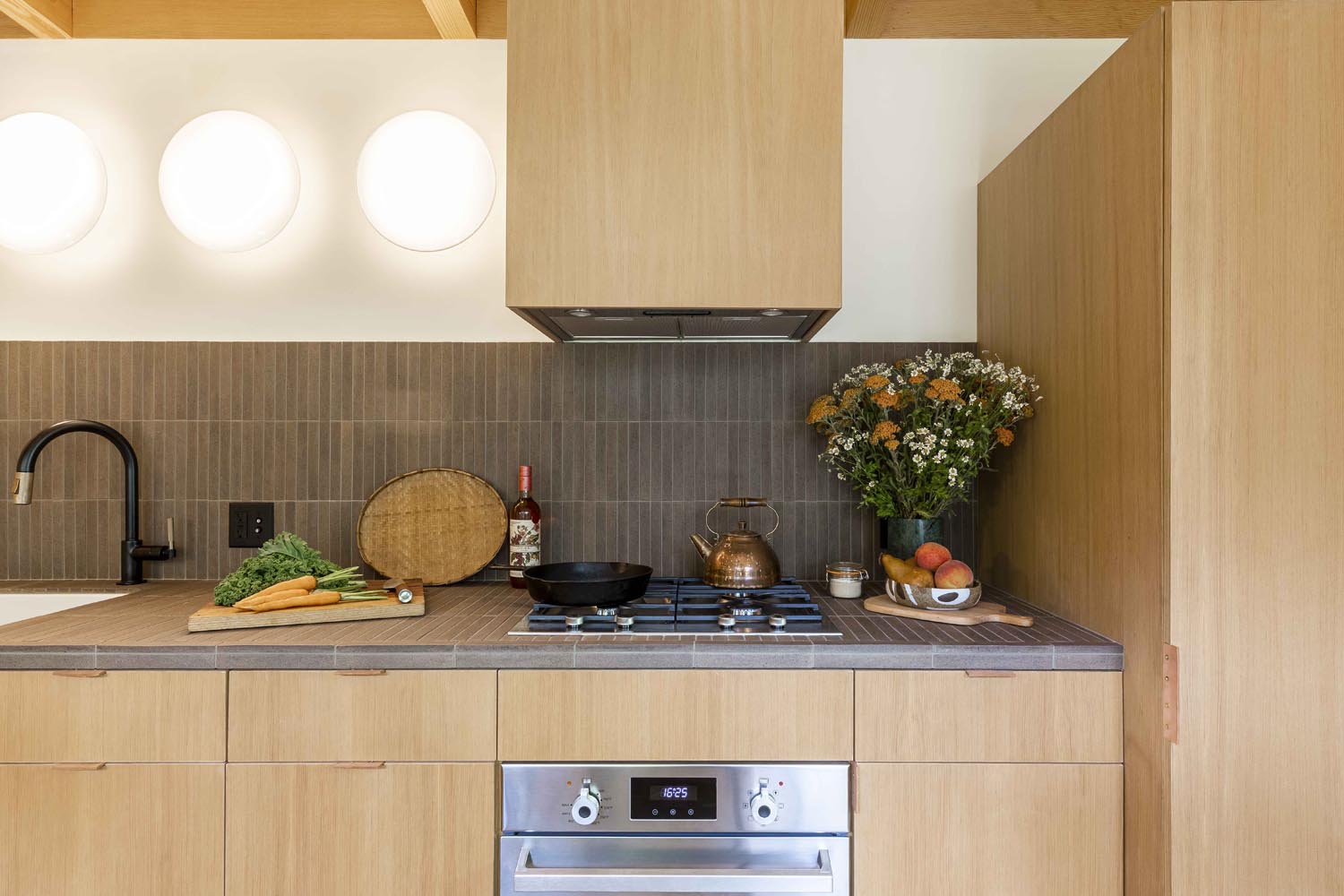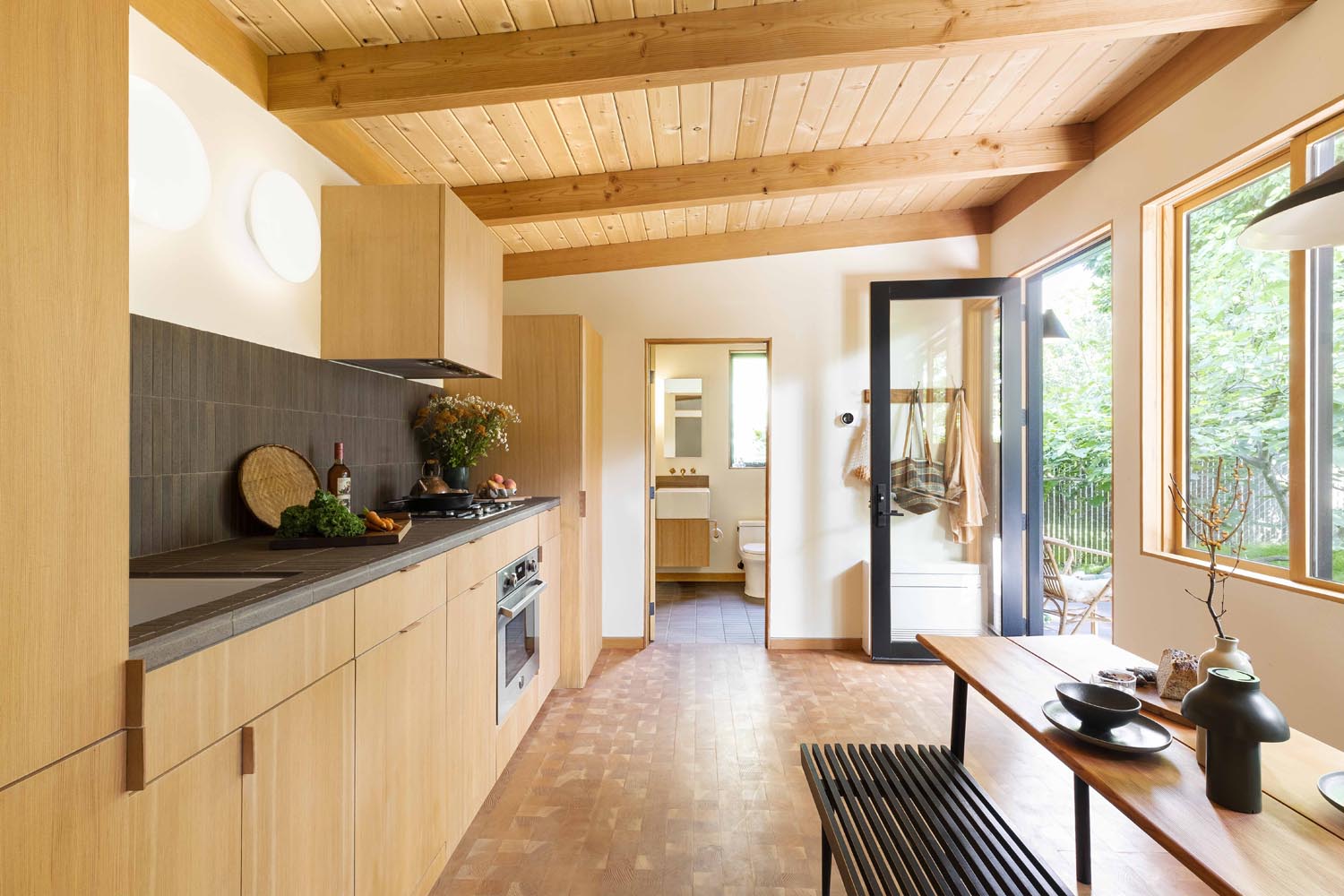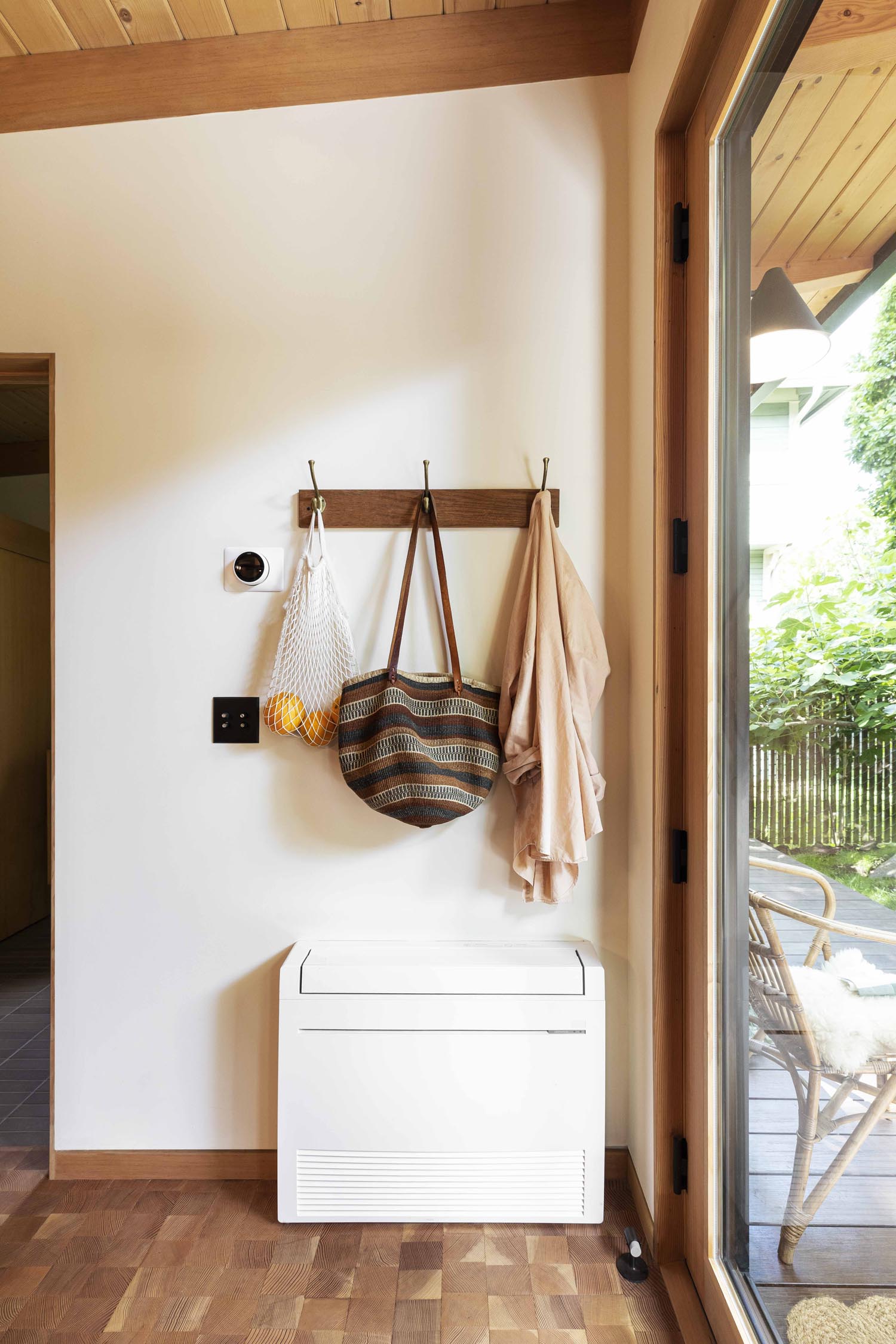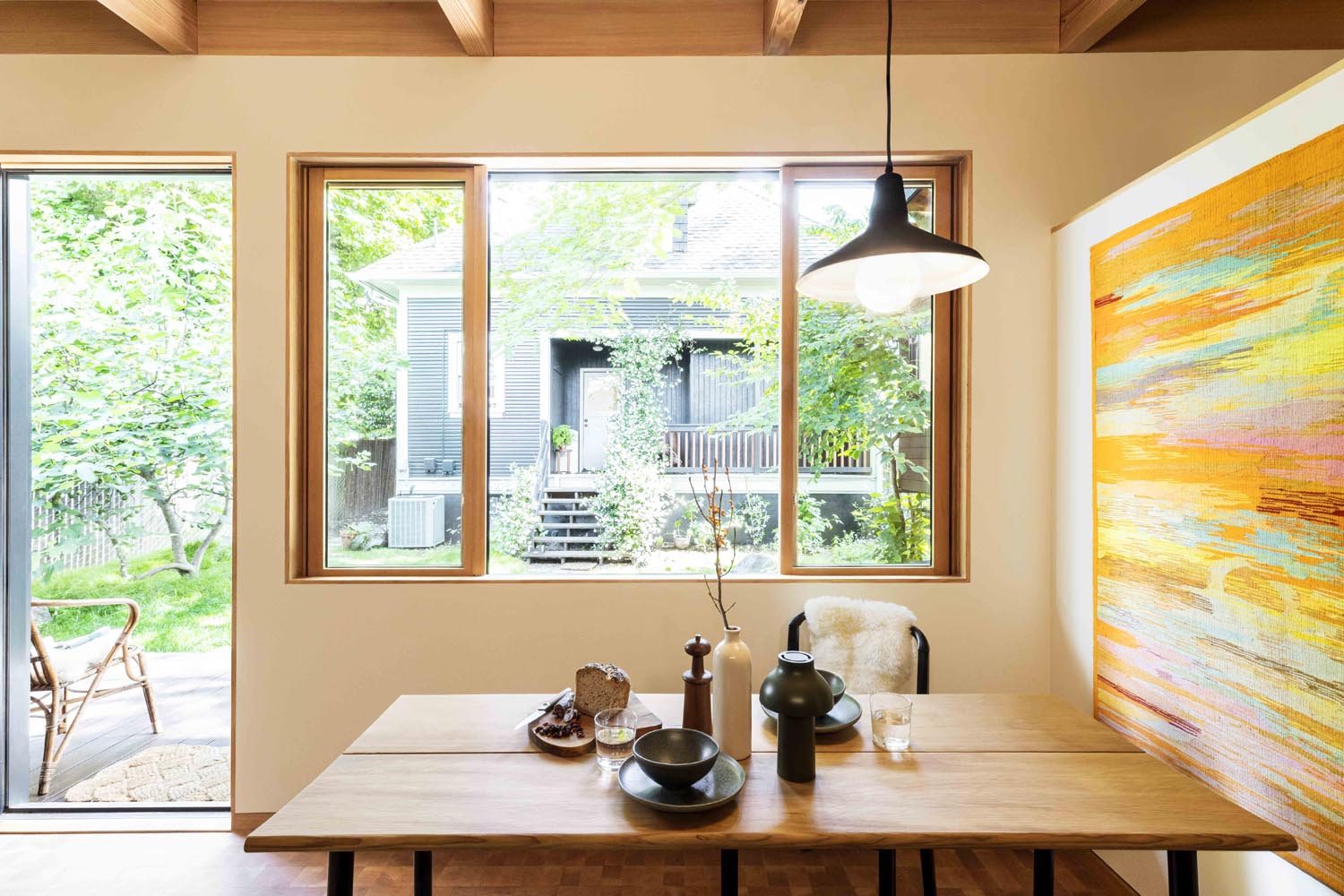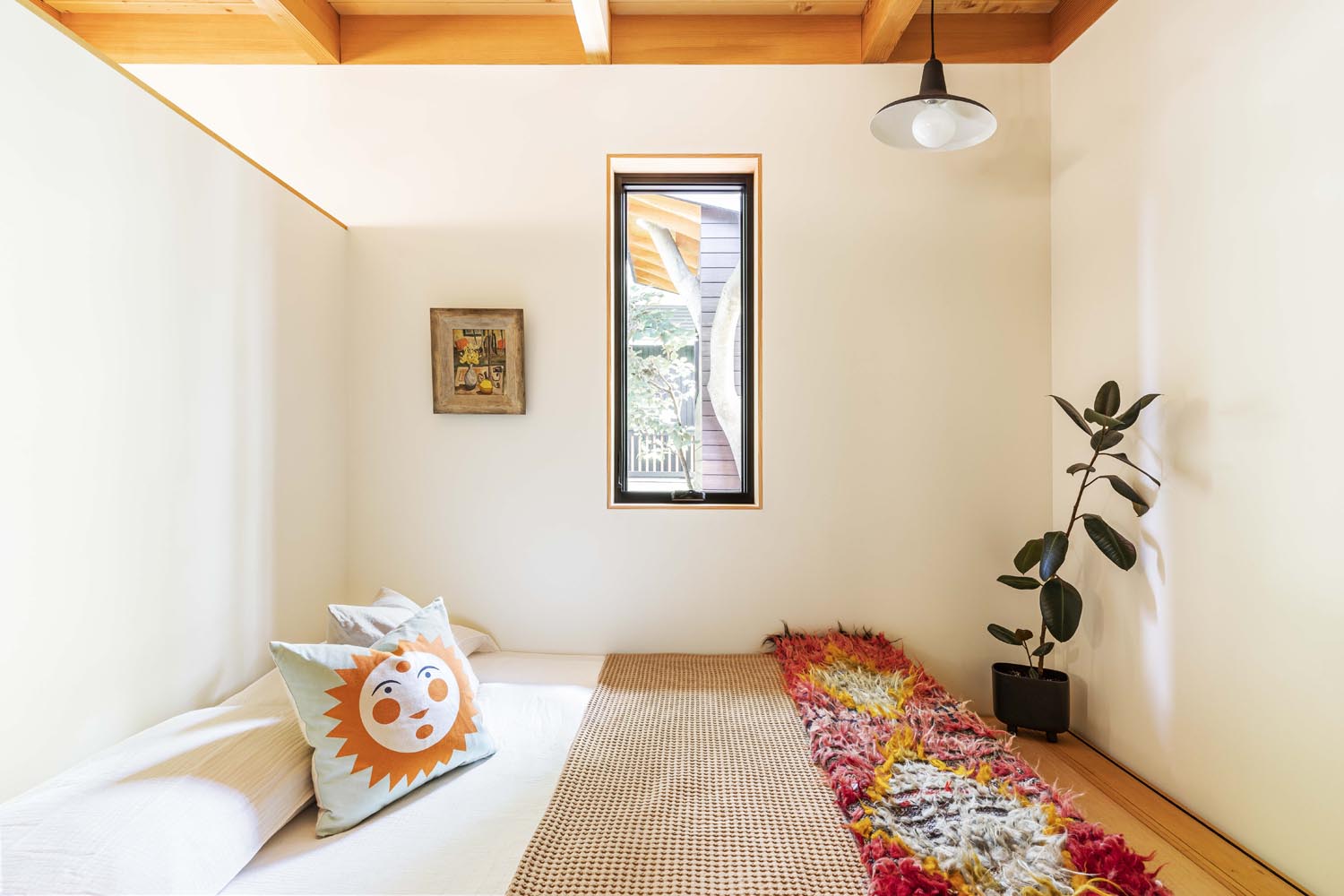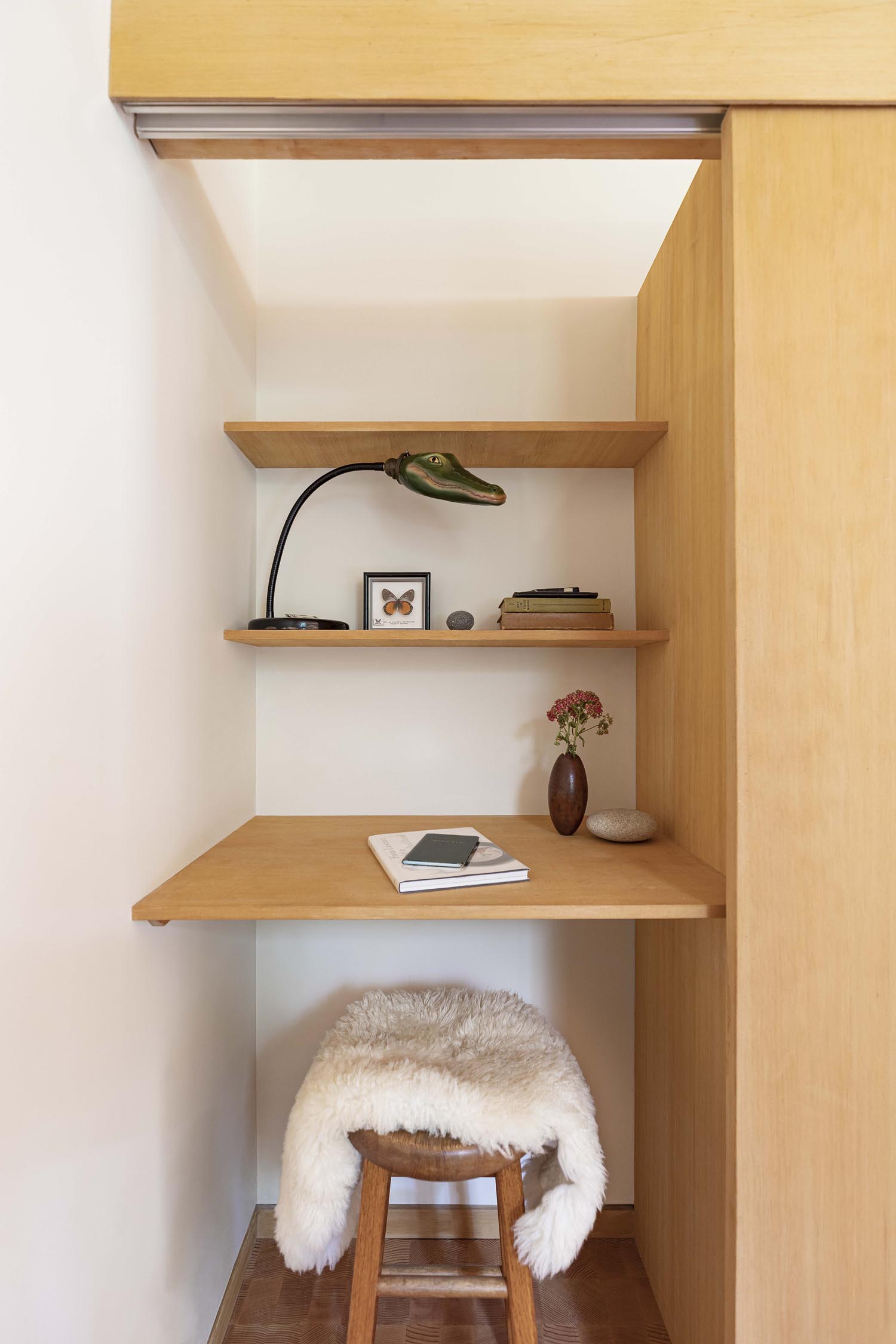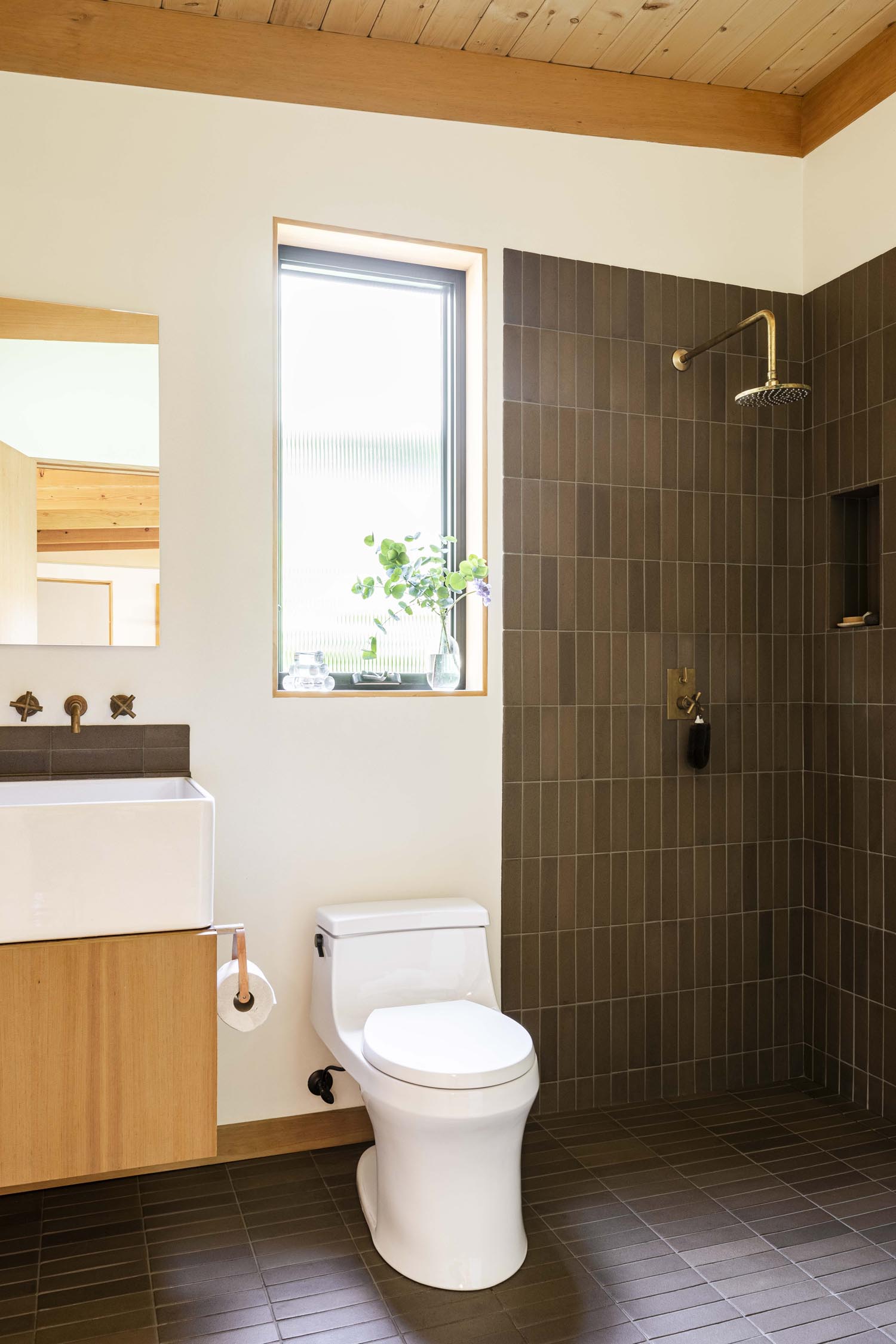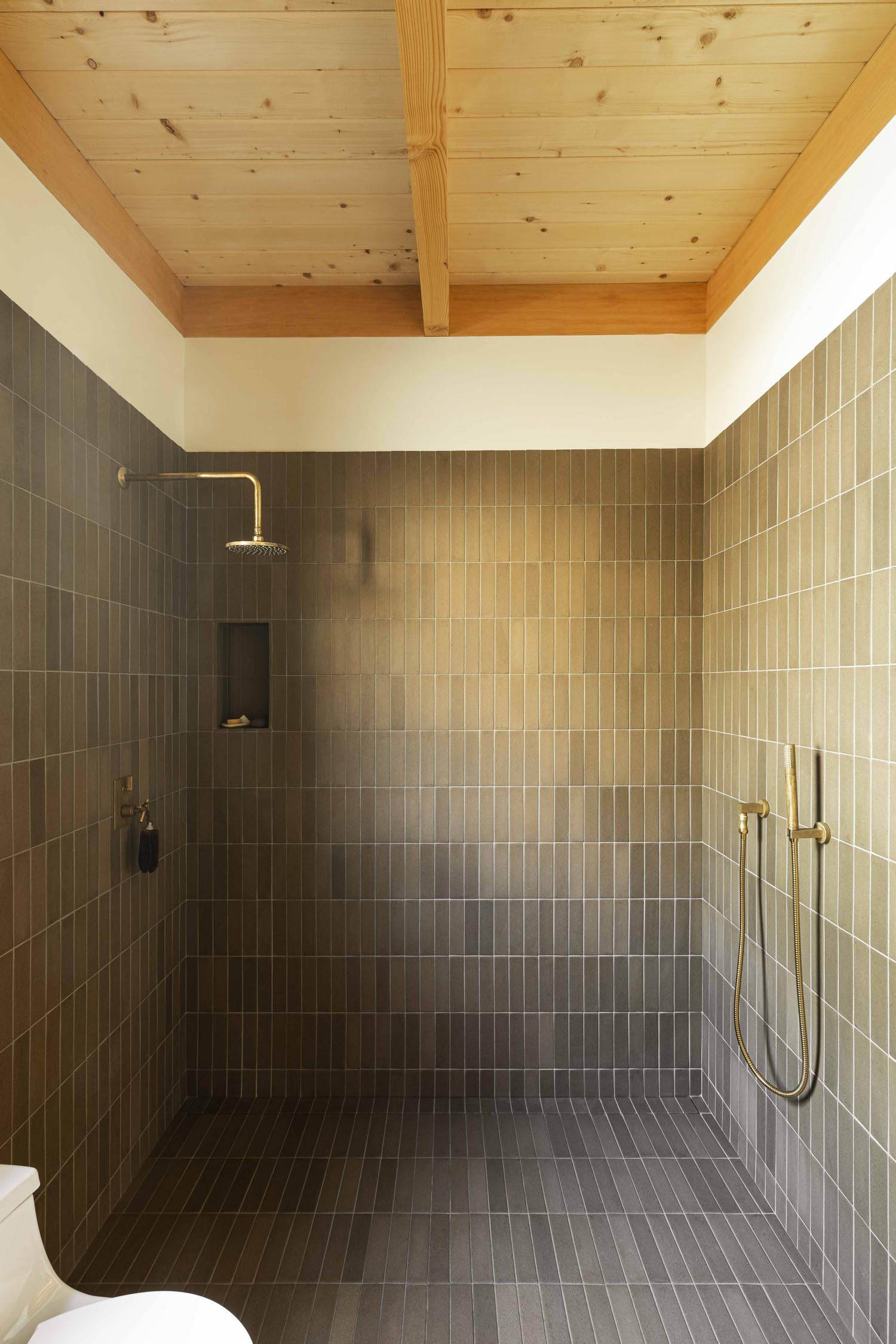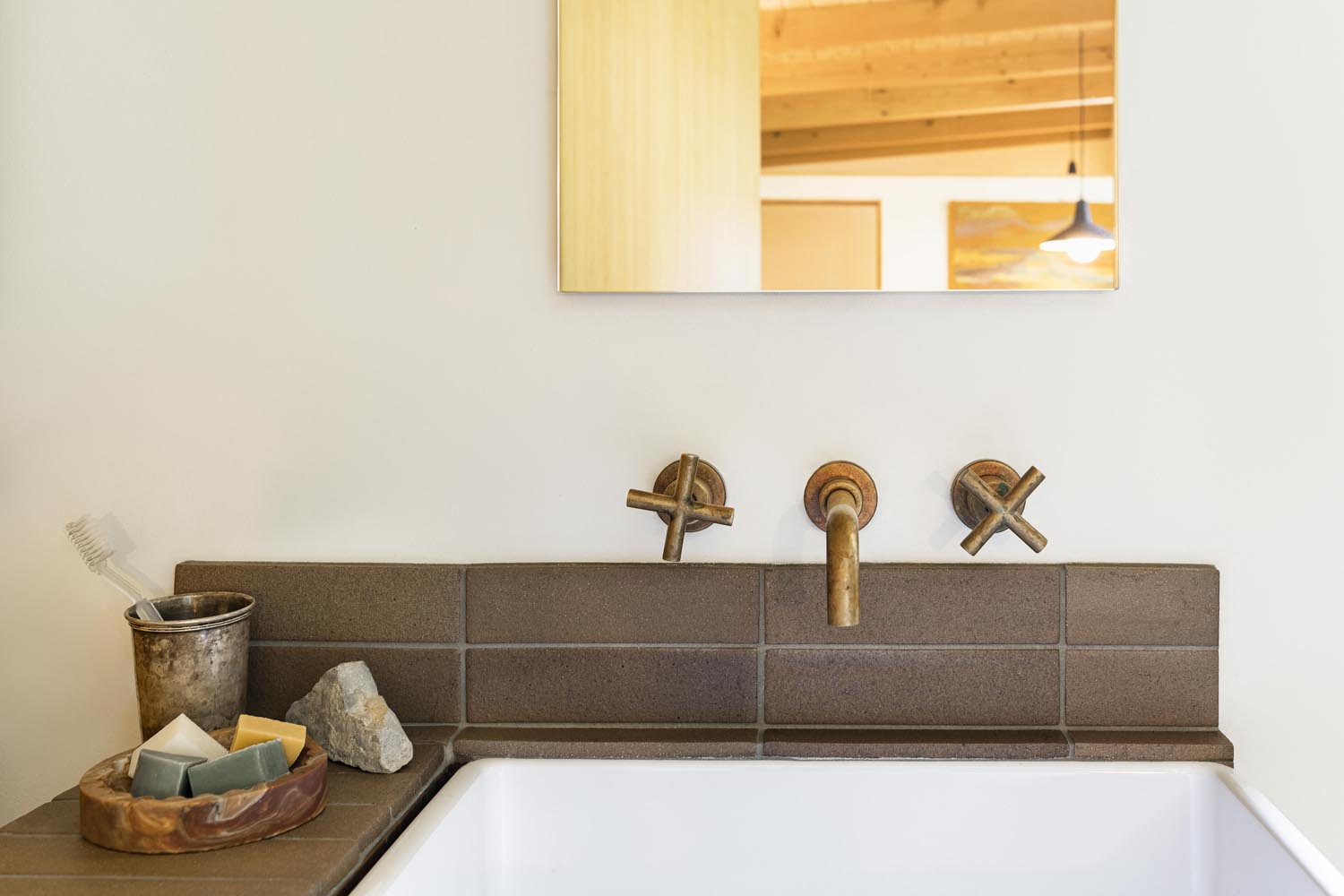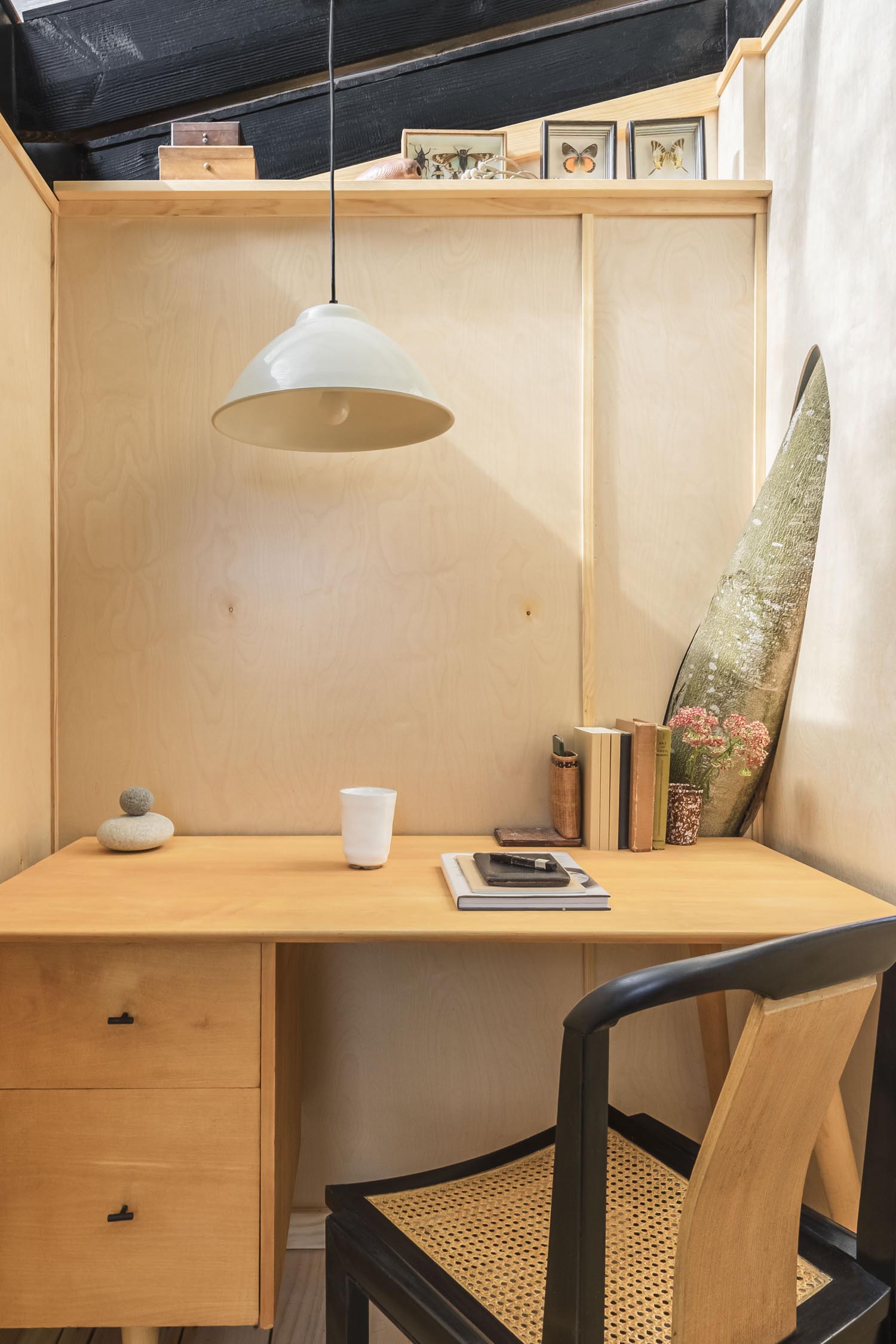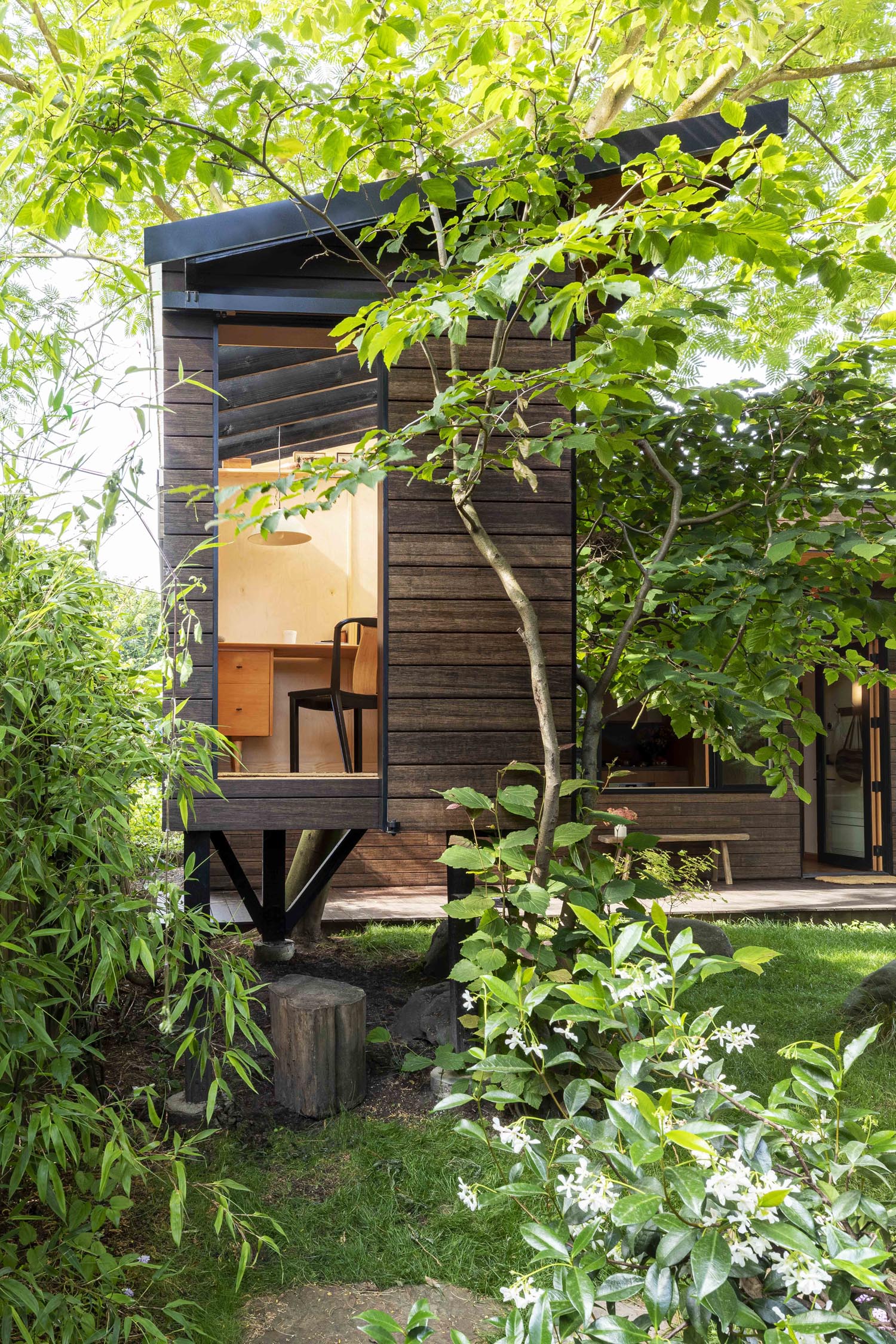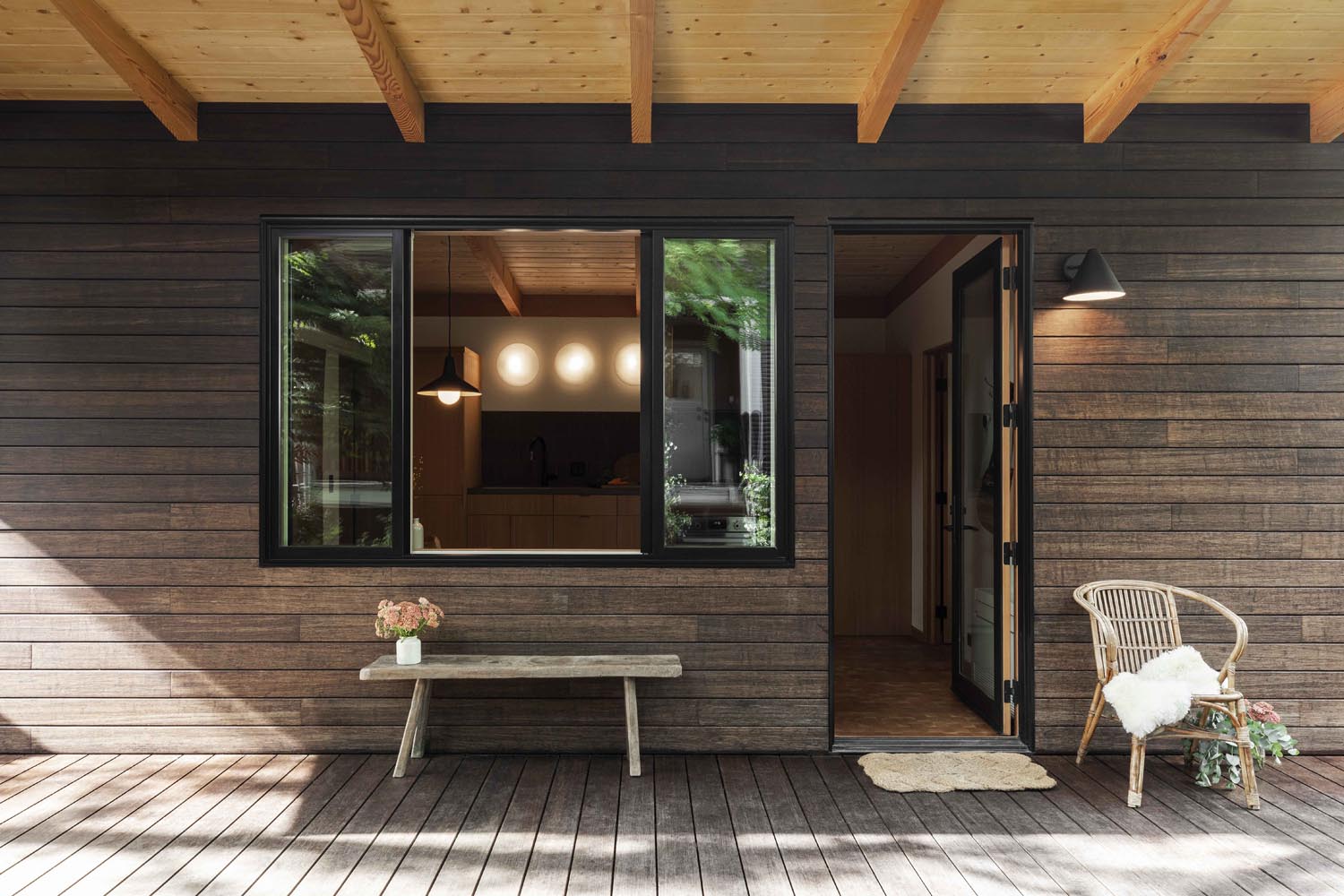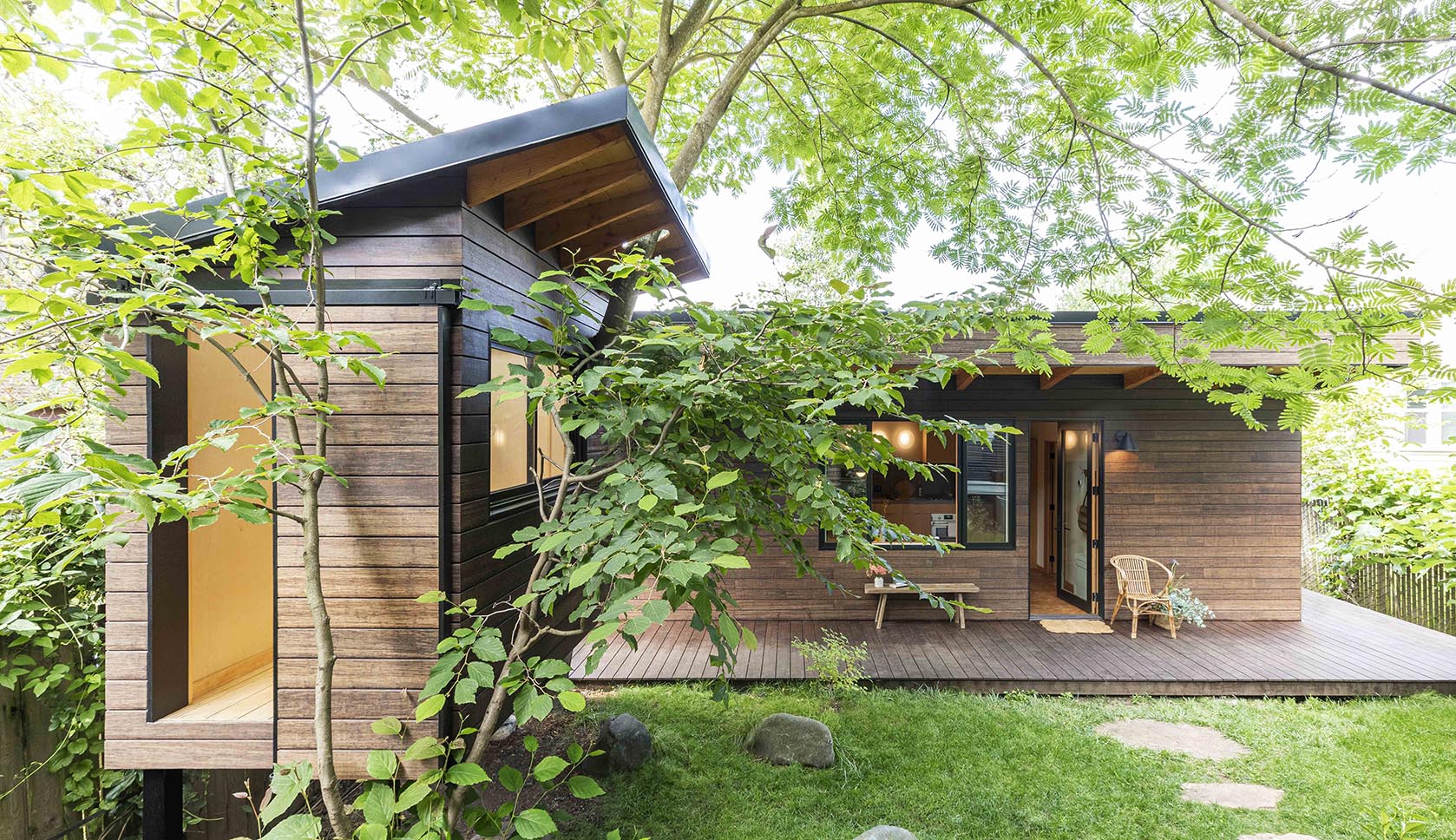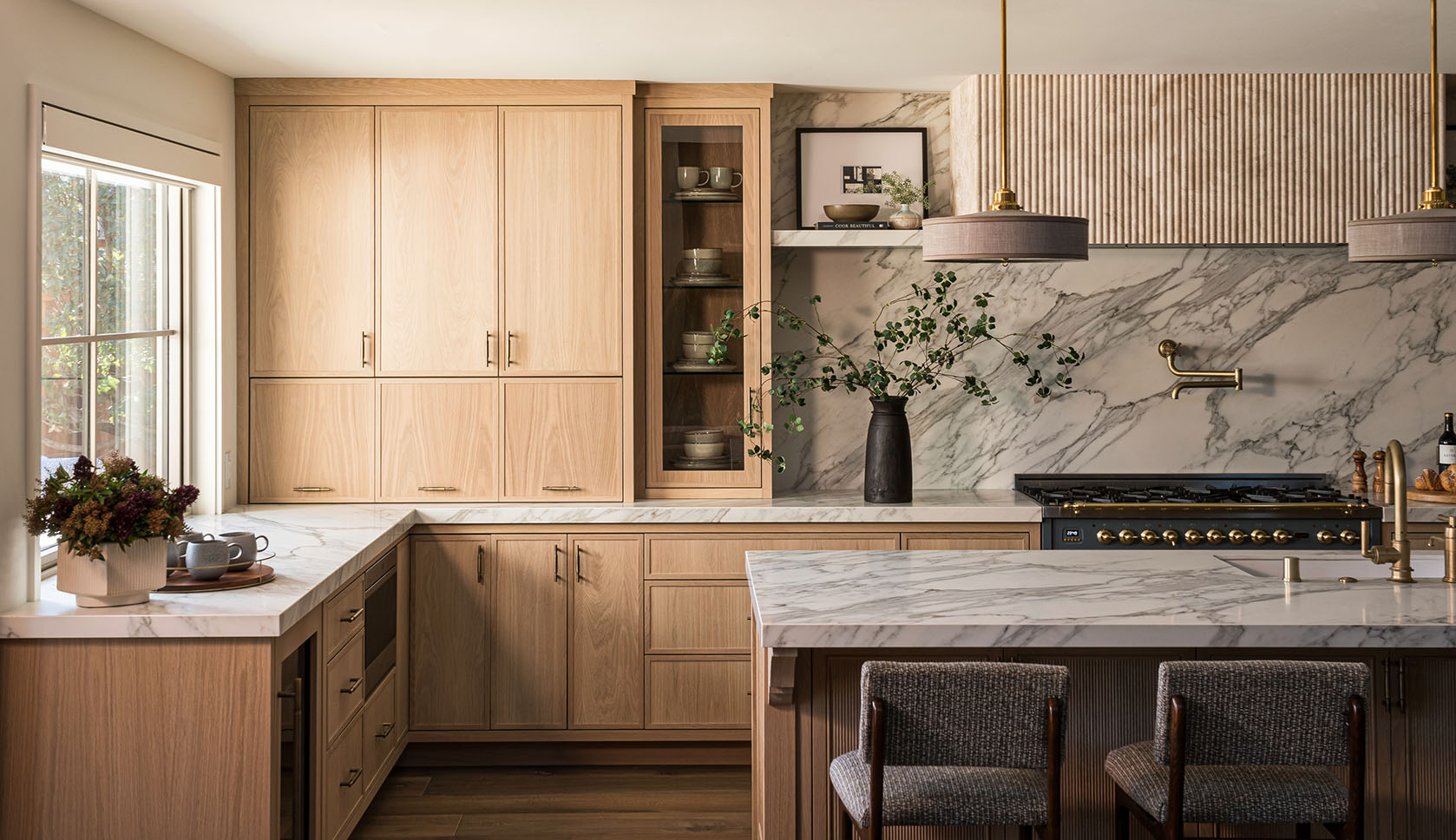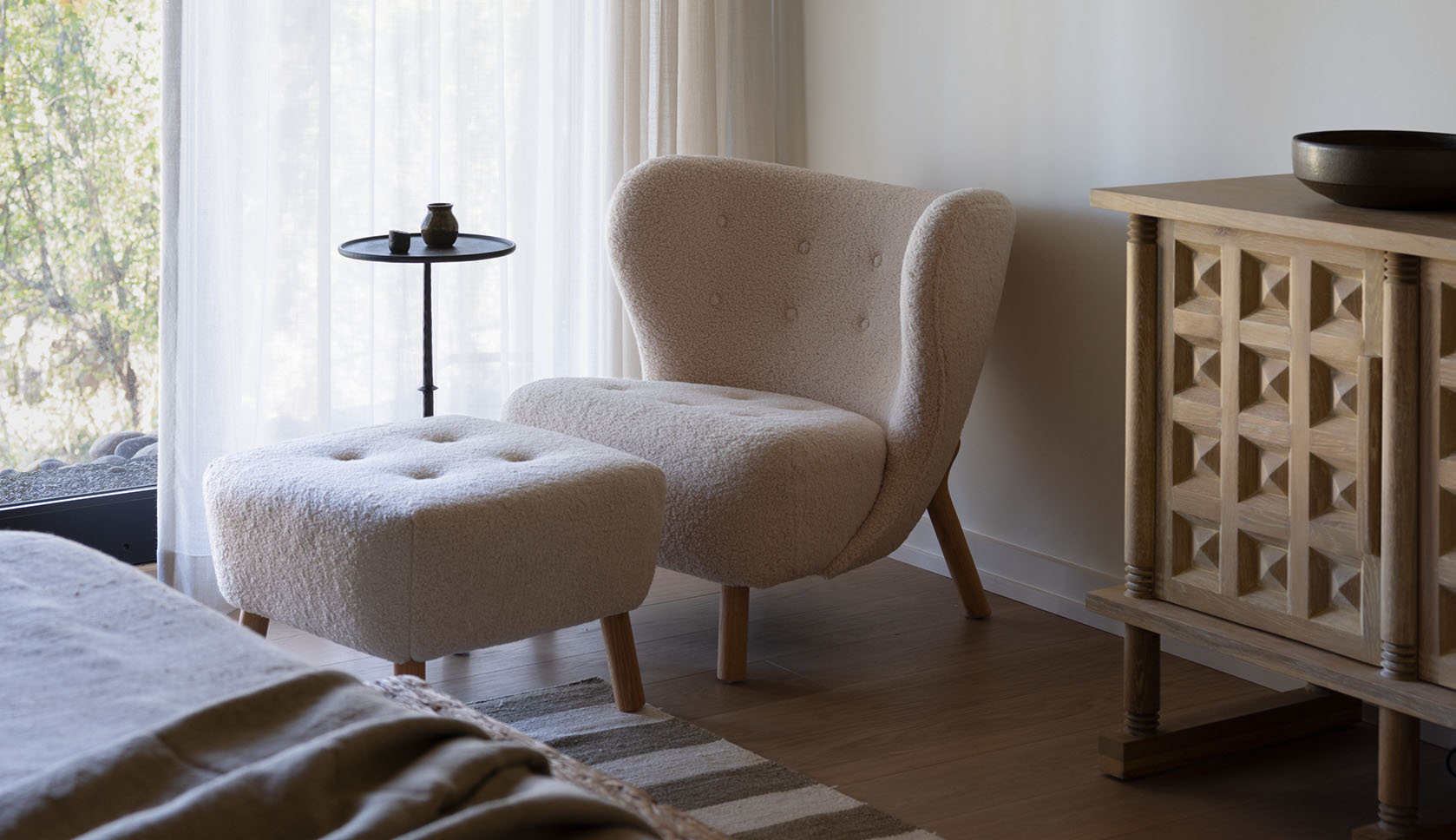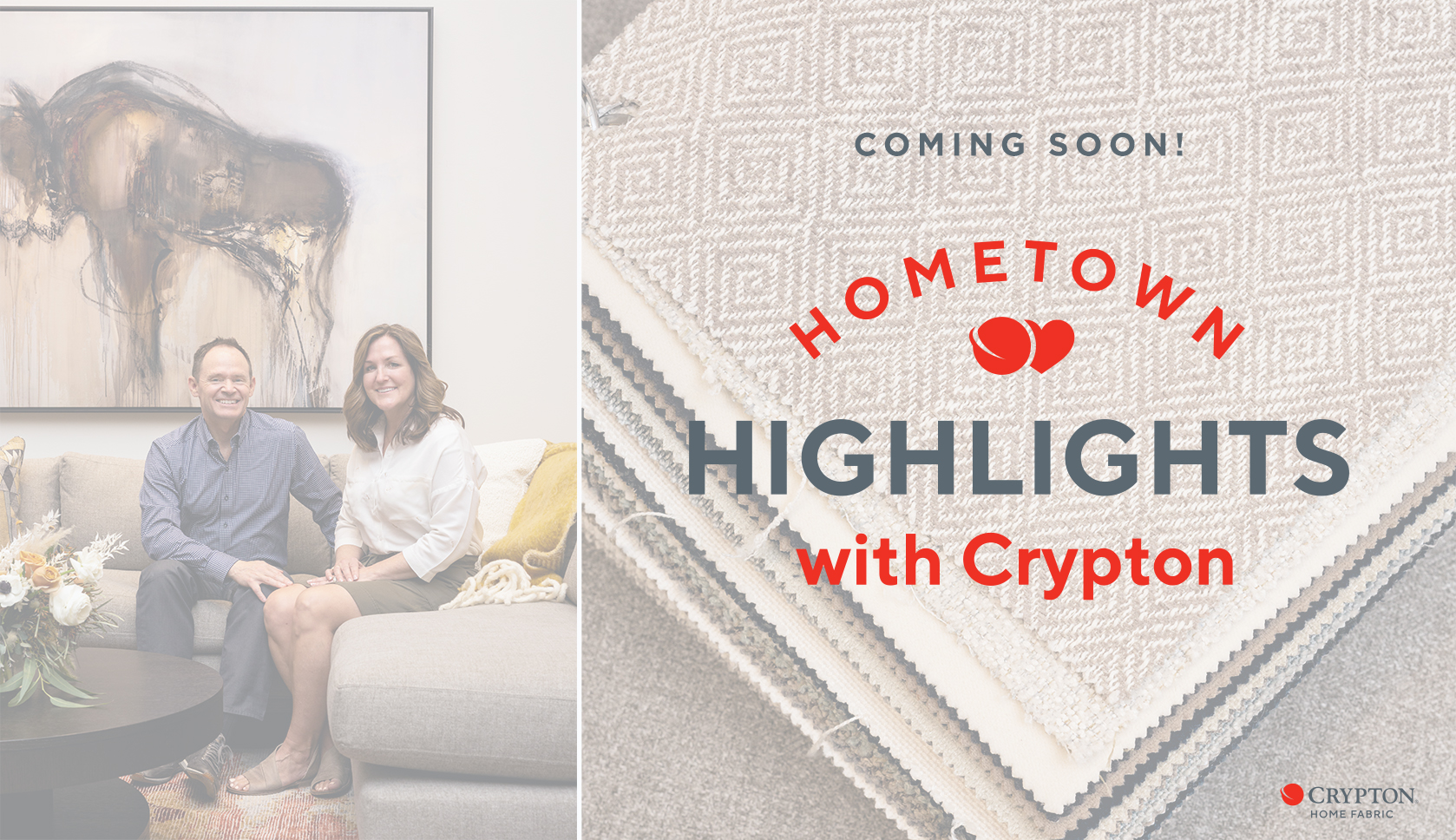The concept of an ADU, or accessory dwelling unit, has become quite popular in recent years. Though ADU is a fancy term, it really is just a secondary unit on the property that can be rented out for extra income — or just serve as an excellent space to host friends and family for a long visit. Grey Shaeffer of willa.work recently constructed one in her Portland backyard for her mother — but don’t be fooled into thinking this is a typical “granny flat” or in-law suite. The space is aesthetically beautiful, environmentally sound, and super cool. Read on for more info on the space.
Tell us about this property. Where exactly is it located, and how did the location impact the design?
The ADU [accessory dwelling unit] was built in NE Portland, Oregon in the back of a 1906 simple Victorian. Portland has a particularly long rainy season so getting light into the space was a priority. To do this we had to get approval to change the rear setback requirements so that the house could be placed as close to the property line as possible – both to preserve the yard and gain the southern light. We decided not to max out the allowable square footage and instead opt for a humble footprint of 360 square-feet, making this a micro-dwelling.
You designed it for your mother, correct?
I wanted to have a place that she could come and stay and be closer to family. I kept it as single level, also for her ease of movement. There are different considerations one has to make when designing for people who are older or aging: walk-in showers, no stairs, and fluidity between spaces.
When it came to material choices, quality and something that felt grounded were key. What’s so wonderful about building small is that you can then choose quality materials. I have always loved the houses that designers or artisans built for themselves. I also wanted the house to be environmentally sound by using materials which age well or are considered green. The flooring is endgrain – which is made from remnants of wood. It is Douglas fir and locally made in Oregon. The siding and the decking are both made of a fused bamboo rather than a tropical hardwood. As you know, bamboo is a fast-growing plant and very sustainable. The green roof also allows for less temperature fluctuations and serves as a pollinator habitat.
What were the challenges when it came to constructing the ADU?
Getting to the backyard was a challenge since there was no driveway to drop materials off on. Everything had to be carried by hand to the back. I was pretty impressed with the general contractor who kept the project going regardless of the weather!
We’d love to know about your favorite details in the space. Any design elements you particularly love?
There is an open yet cozy feeling to the space as the palette is kept warm and neutral. My favorite details include the tile and the flooring. Both are materials that I have wanted to use for quite some time. Also, the vintage wall lights by Arne Jacobson. I really love to do a deep dive into Etsy or 1stdibs to find vintage to add to my projects.
I have yet to find a cabinet pull that I really like, so for the last three projects I have made my own pulls out of a vegetable tanned leather that is then routed into the top of the drawer or side of the door. This provides a seamlessness to the cabinetry without carving out a large chunk or attaching something that feels too “stuck” on.
There are also the built-ins that allow for efficiency in the space. For example, the bed is longer so that there is a place at the foot of it to put extra pillows or bedding or a plant. There is also under storage at the foot of the bed where it hinges up to stow more things away. The built-in desk is perfect with a stool or as a standing desk. The kitchen counters are also slightly higher than typical to also accommodate a dual function as working space. This all came in handy when Covid hit and the ADU became the WFH office. The fridge also hides in its own cabinet that has ventilation holes. I’ve always felt that built-in fridges still look like fridges. It’s actually less expensive and more graceful to just tuck them into their own cabinet!
What were the unique challenges with this project?
The main challenge was how long it took to get the setback requirements reduced and approved by the city. After that, everything went rather smoothly. Everything had been designed and picked out and shipped or was in transit by the time we broke ground.
